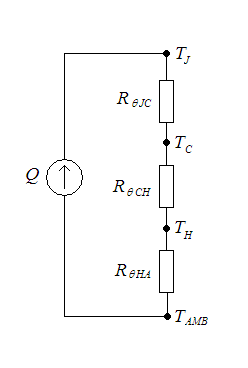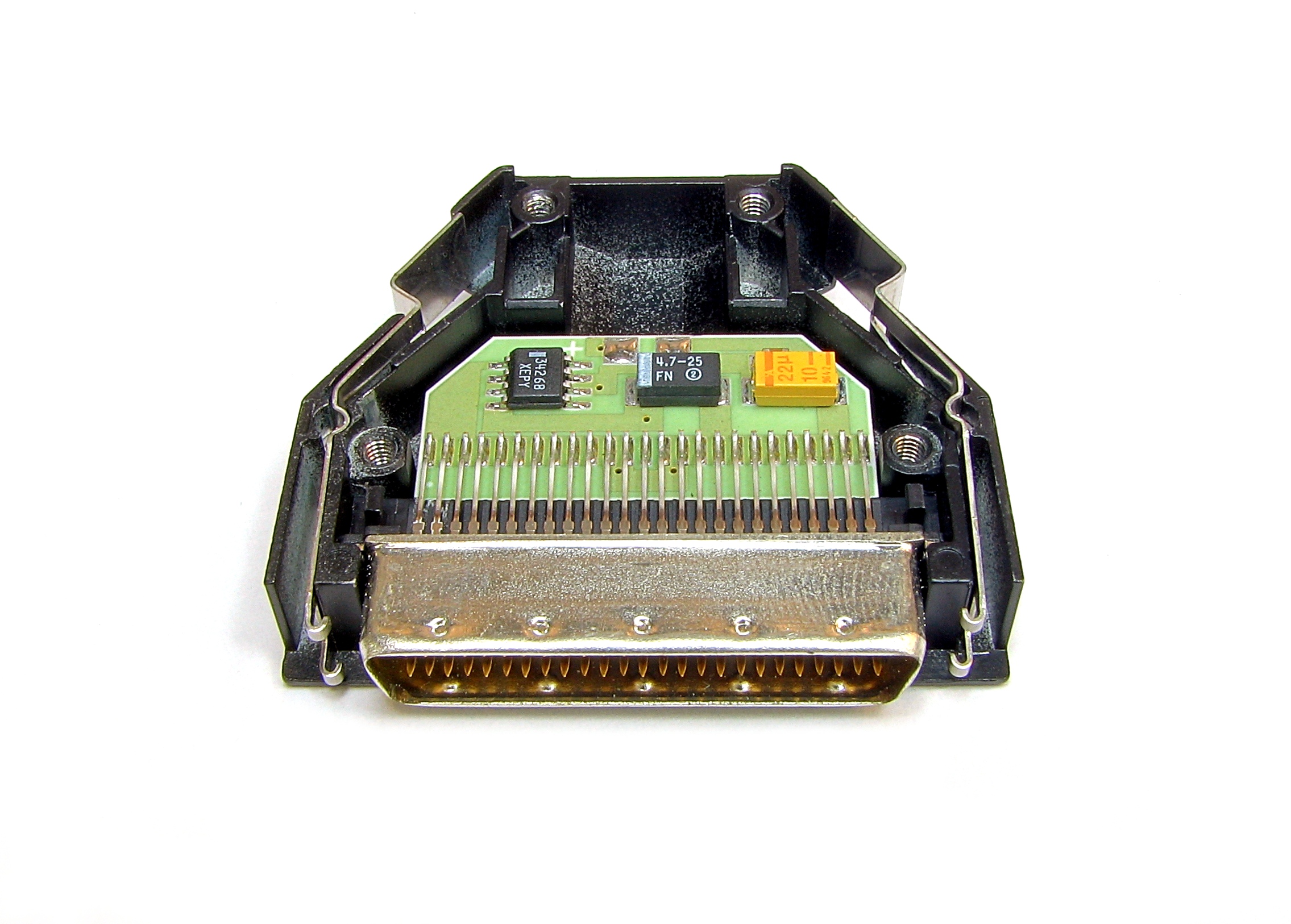|
Neher–McGrath Method
In electrical engineering, Neher–McGrath is a method of estimating the steady-state temperature of electrical power cables for some commonly encountered configurations. By estimating the temperature of the cables, the safe long-term current-carrying capacity of the cables can be calculated. J. H. Neher and M. H. McGrath were two electrical engineers who wrote a paper in 1957 about how to calculate the capacity of current (ampacity) of cables. The paper described two-dimensional highly symmetric simplified calculations which have formed the basis for many cable application guidelines and regulations. Complex geometries, or configurations that require three-dimensional analysis of heat flow, require more complex tools such as finite element analysis. Their article became used as reference for the ampacity in most of the standard tables. Overview The Neher–McGrath paper summarized years of research into analytical treatment of the practical problem of heat transfer from power c ... [...More Info...] [...Related Items...] OR: [Wikipedia] [Google] [Baidu] |
Electrical Engineering
Electrical engineering is an engineering discipline concerned with the study, design, and application of equipment, devices, and systems that use electricity, electronics, and electromagnetism. It emerged as an identifiable occupation in the latter half of the 19th century after the commercialization of the electric telegraph, the telephone, and electrical power generation, distribution, and use. Electrical engineering is divided into a wide range of different fields, including computer engineering, systems engineering, power engineering, telecommunications, radio-frequency engineering, signal processing, instrumentation, photovoltaic cells, electronics, and optics and photonics. Many of these disciplines overlap with other engineering branches, spanning a huge number of specializations including hardware engineering, power electronics, Electromagnetism, electromagnetics and waves, microwave engineering, nanotechnology, electrochemistry, renewable energies, mechatronics/control ... [...More Info...] [...Related Items...] OR: [Wikipedia] [Google] [Baidu] |
Direct Current
Direct current (DC) is one-directional electric current, flow of electric charge. An electrochemical cell is a prime example of DC power. Direct current may flow through a conductor (material), conductor such as a wire, but can also flow through semiconductors, electrical insulation, insulators, or even through a vacuum as in electron beam, electron or ion beams. The electric current flows in a constant direction, distinguishing it from alternating current (AC). A archaism, term formerly used for this type of current was galvanic current. The abbreviations ''AC'' and ''DC'' are often used to mean simply ''alternating'' and ''direct'', as when they modify ''Electric current, current'' or ''voltage''. Direct current may be converted from an alternating current supply by use of a rectifier, which contains Electronics, electronic elements (usually) or electromechanical elements (historically) that allow current to flow only in one direction. Direct current may be converted into alt ... [...More Info...] [...Related Items...] OR: [Wikipedia] [Google] [Baidu] |
Niche Market
A niche market is the subset of the market on which a product is appealed to a small group of consumers. The market niche defines the product features aimed at satisfying specific market needs, as well as the price range, production quality and the demographics that it is intended to target. It is also a small market segment. Sometimes, a product or service can be entirely designed to satisfy a niche market. Not every product can be defined by its market niche. The niche market is highly specialized, and aiming to survive among the competition from numerous super companies. Even established companies create products for different niches; Hewlett-Packard has all-in-one machines for printing, scanning and faxing targeted for the home office niche, while at the same time having separate machines with one of these functions for big businesses. In practice, product vendors and trade businesses are commonly referred to as ''mainstream providers'' or ''narrow demographics niche market pr ... [...More Info...] [...Related Items...] OR: [Wikipedia] [Google] [Baidu] |
Electrical Conduit
An electrical conduit is a tube used to protect and route electrical wiring in a building or structure. Electrical conduit may be made of metal, plastic, fiber, or fired clay. Most conduit is rigid, but flexible conduit is used for some purposes. Conduit is generally installed by electricians at the site of installation of electrical equipment. Its use, form, and installation details are often specified by wiring regulations, such as the US National Electrical Code (NEC) and other building codes. Comparison with other wiring methods Electrical conduit provides very good protection to enclosed conductors from impact, moisture, and chemical vapors. Varying numbers, sizes, and types of conductors can be pulled into a conduit, which simplifies design and construction compared to multiple runs of cables or the expense of customized composite cable. Wiring systems in buildings may be subject to frequent alterations. Frequent wiring changes are made simpler and safer through the ... [...More Info...] [...Related Items...] OR: [Wikipedia] [Google] [Baidu] |
Thermal Resistance
In heat transfer, thermal engineering, and thermodynamics, thermal conductance and thermal resistance are fundamental concepts that describe the ability of materials or systems to conduct heat and the opposition they offer to the heat current. The ability to manipulate these properties allows engineers to control temperature gradient, prevent thermal shock, and maximize the efficiency of thermal systems. Furthermore, these principles find applications in a multitude of fields, including materials science, mechanical engineering, electronics, and energy management. Knowledge of these principles is crucial in various scientific, engineering, and everyday applications, from designing efficient temperature control, thermal insulation, and thermal management in industrial processes to optimizing the performance of electronic devices. Thermal conductance (''G'') measures the ability of a material or system to conduct heat. It provides insights into the ease with which heat can pa ... [...More Info...] [...Related Items...] OR: [Wikipedia] [Google] [Baidu] |
Skin Effect
In electromagnetism, skin effect is the tendency of an alternating current, alternating electric current (AC) to become distributed within a Conductor (material), conductor such that the current density is largest near the surface of the conductor and decreases exponentially with greater depths in the conductor. It is caused by opposing eddy currents induced by the changing magnetic field resulting from the alternating current. The electric current flows mainly at the ''skin'' of the conductor, between the outer surface and a level called the skin depth. Skin depth depends on the frequency of the alternating current; as frequency increases, current flow becomes more concentrated near the surface, resulting in less skin depth. Skin effect reduces the effective cross-section of the conductor and thus increases its effective electrical resistance, resistance. At 60 Hertz, Hz in copper, skin depth is about 8.5 mm. At high frequencies, skin depth becomes much smaller. Increased ... [...More Info...] [...Related Items...] OR: [Wikipedia] [Google] [Baidu] |
National Electrical Code
The National Electrical Code (NEC), or NFPA 70, is a regionally adoptable standard for the safe installation of electrical wiring and equipment in the United States. It is part of the National Fire Code series published by the National Fire Protection Association (NFPA), a private trade association. Despite the use of the term "national," it is not a federal law. It is typically adopted by states and municipalities in an effort to standardize their enforcement of safe electrical practices. In some cases, the NEC is amended, altered and may even be rejected in lieu of regional regulations as voted on by local governing bodies. The "authority having jurisdiction" inspects for compliance with the standards. The NEC should not be confused with the National Electrical Safety Code (NESC), published by the Institute of Electrical and Electronics Engineers (IEEE). The NESC is used for electric power and communication utility systems including overhead lines, underground lines, and pow ... [...More Info...] [...Related Items...] OR: [Wikipedia] [Google] [Baidu] |
Power Cable
A power cable is an electrical cable used specifically for transmission of electric energy, electrical power. It is an assembly of one or more electrical conductors, usually held together in a single bundle with an insulator (electricity), insulating sheath, although some power cables are simply rigged as exposed live wire (electricity), live wires. Power cables may be detachable portable cords (typically coupled with adaptors), or installed as permanent electrical wiring, wirings within buildings and non-building structure, structures, underground power line, buried in the ground, submarine power cable, laid underwater or overhead power line, run overhead. Power cables that are bundled inside thermoplastic-sheathed cable, thermoplastic sheathing and that are intended to be run inside a building are known as NM-B (nonmetallic sheathed building cable). Small flexible power cables are used for electrical devices such as computers and peripherals, mobile devices, home appliances, l ... [...More Info...] [...Related Items...] OR: [Wikipedia] [Google] [Baidu] |
Electrical Termination
In electronics, electrical termination is the practice of ending a transmission line with a device that matches the characteristic impedance of the line. Termination prevents signals from Signal reflection, reflecting off the end of the transmission line. Reflections at the ends of unterminated transmission lines cause distortion, which can produce ambiguous digital signal levels and misoperation of digital systems. Reflections in analog signal systems cause such effects as ghosting (television), video ghosting, or Power margin, power loss in radio transmitter transmission lines. Transmission lines Signal termination often requires the installation of a terminator at the beginning and end of a wire or cable to prevent an RF signal from being reflected back from each end, causing Interference (communication), interference, or power loss. The terminator is usually placed at the end of a transmission line or Daisy chain (electrical engineering), daisy chain Bus (computing), bus (s ... [...More Info...] [...Related Items...] OR: [Wikipedia] [Google] [Baidu] |
Insulator (electrical)
An electrical insulator is a material in which electric current does not flow freely. The atoms of the insulator have tightly bound electrons which cannot readily move. Other materials—semiconductors and electrical conductor, conductors—conduct electric current more easily. The property that distinguishes an insulator is its resistivity; insulators have higher resistivity than semiconductors or conductors. The most common examples are Nonmetal (chemistry), non-metals. A perfect insulator does not exist because even the materials used as insulators contain small numbers of mobile charges (charge carriers) which can carry current. In addition, all insulators become electrically conductive when a sufficiently large voltage is applied that the electric field tears electrons away from the atoms. This is known as electrical breakdown, and the voltage at which it occurs is called the breakdown voltage of an insulator. Some materials such as glass, Electrical insulation paper, paper ... [...More Info...] [...Related Items...] OR: [Wikipedia] [Google] [Baidu] |





